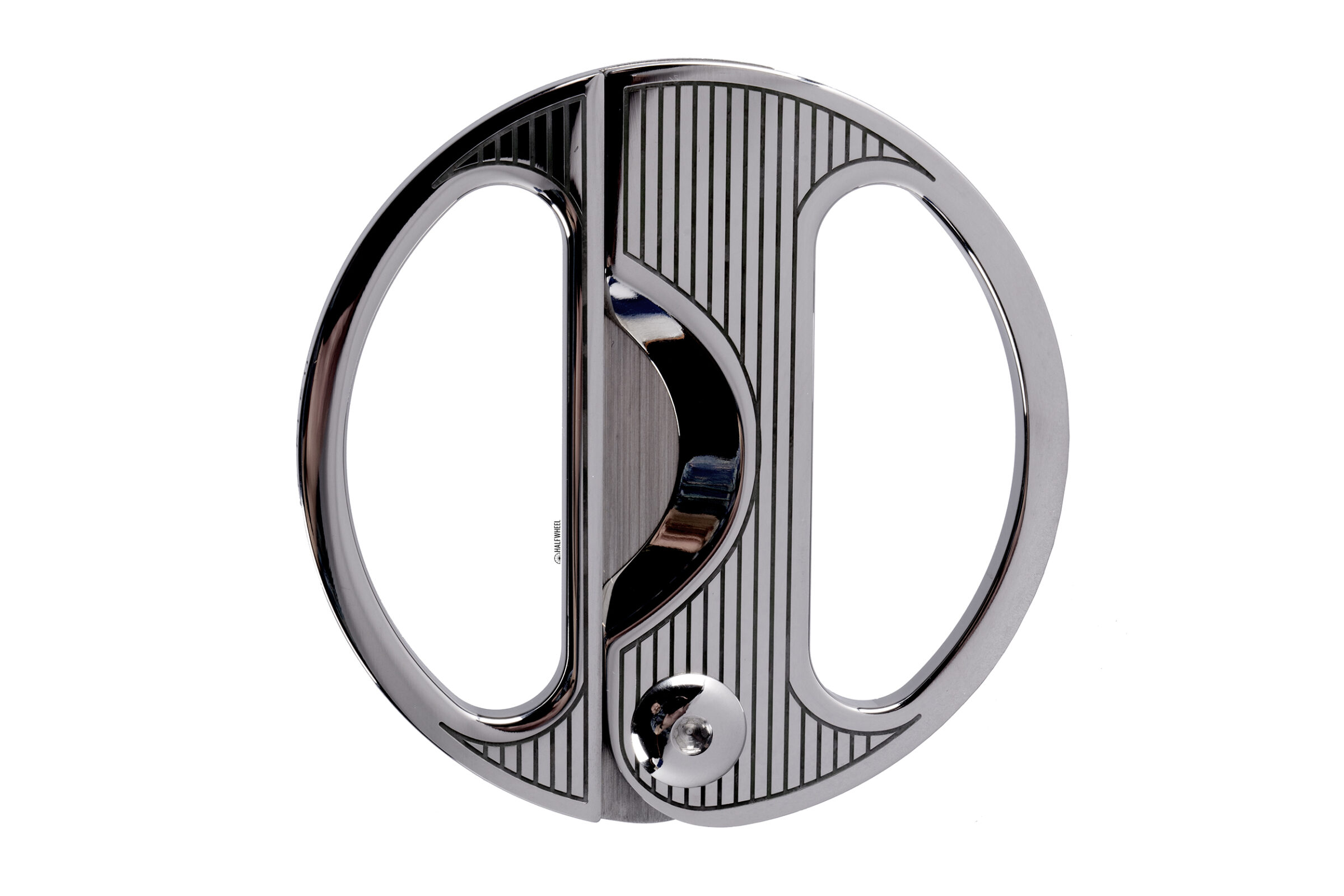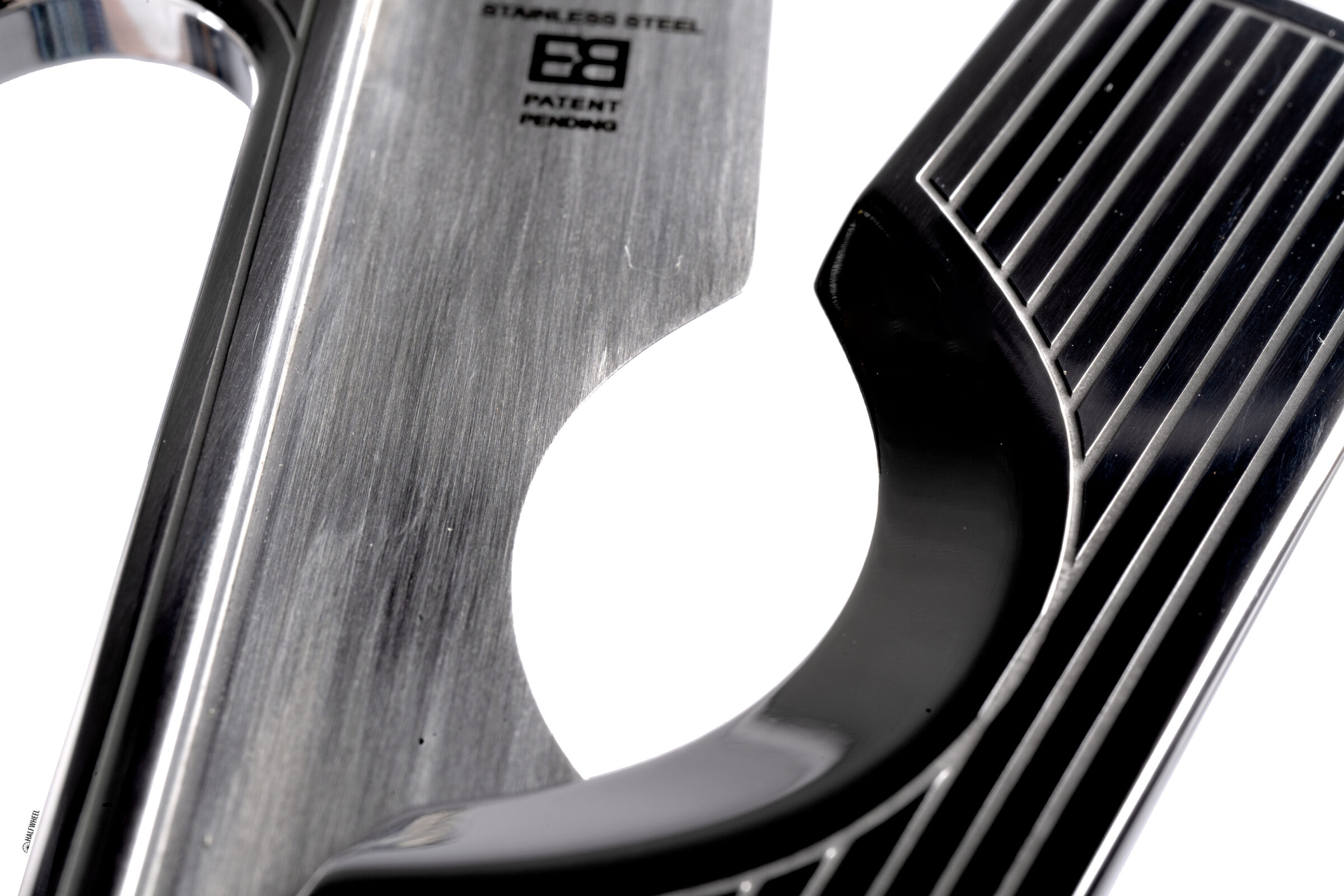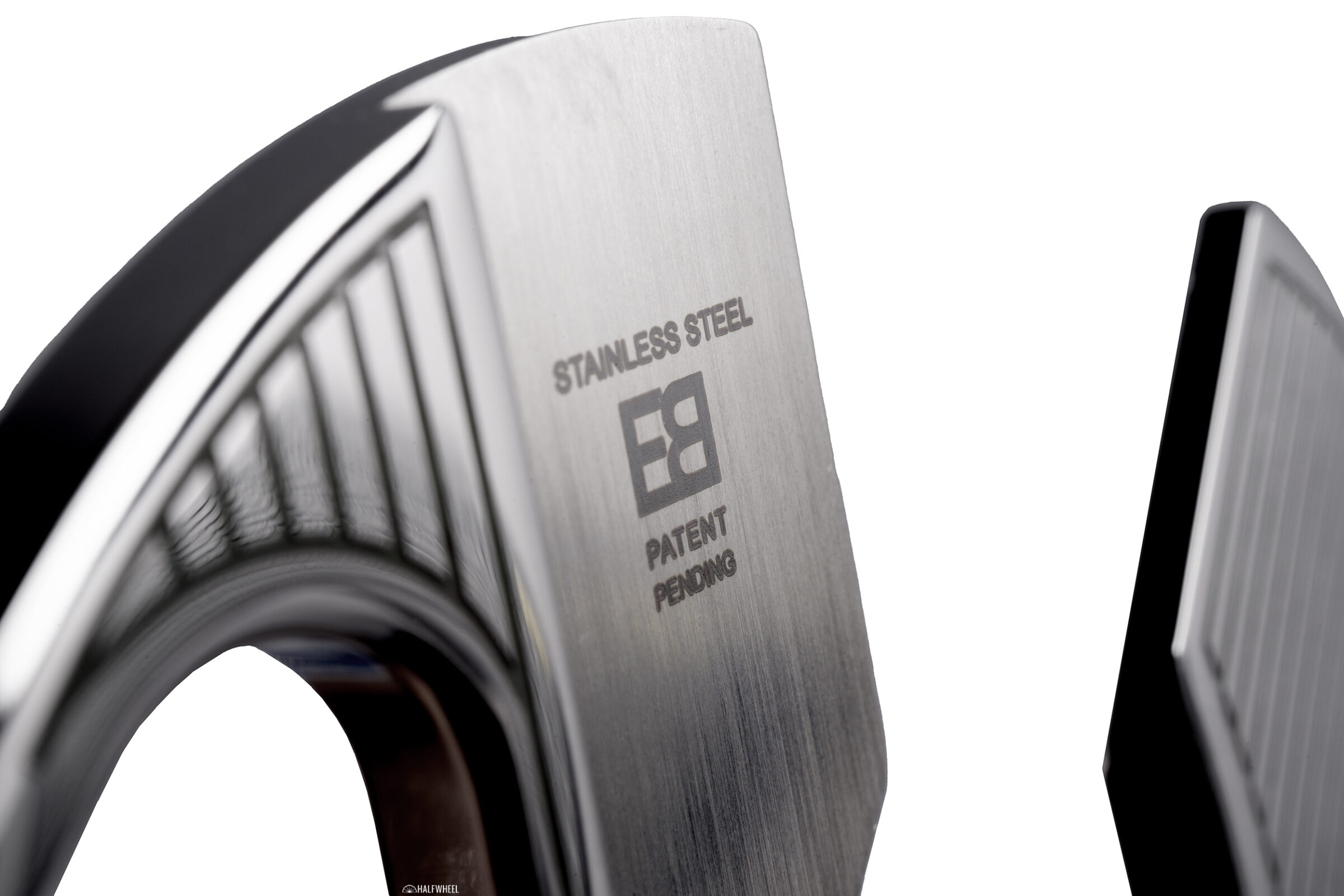During the 2022 PCA Convention & Trade Show, French accessory company Elie Bleu showed off a completely new cutter design bearing the name 360 Scissor by Elie Bleu. The 360 in the name refers to the round design of the cutter, which opens and closes in a way that is reminiscent of Pac-Man.
WHAT IS IT?
The 360 Scissor is a double guillotine cutter, albeit a cutter that shares a number of visual similarities with a pair of round scissors. The 360 features two handles, which are connected via a single hinge that, when opened, reveals two blades. However, when the cutter is closed, those handles are held together by a magnetic closure system.
According to Elie Bleu, the cutter is manufactured in China. It features a body made of steel, while the blades are made of hardened surgical steel. The cutter weighs 150 grams and measures 2.75 inches from end to end when closed and 4.75 inches when fully open. The company says the 360 can cut cigars up to 68-ring gauge, a claim that I found to be true while testing the cutter.
HOW MUCH DOES IT COST?
The 360 Scissor by Elie Bleu is offered in four different finishes, each with the same MSRP of $290: Silver with Gold Button, Gold Pinstripe, Silver Pinstripe and Black IP.
HOW DOES IT WORK?
Essentially, the 360 Scissor by Elie Bleu works like a standard double guillotine cutter, with two notable exceptions: the aforementioned hinge that connects the blades and the somewhat unusual shape of the handles.
To use the 360, I insert three fingers into the two large openings: in my case, my middle and ring fingers go into the left opening, while my thumb goes into the right opening. I then open the cutter like a pair of scissors by pulling open the handles. This action opens the handles and blades while at the same time also revealing the opening where the cap of the cigar should be placed. At this point, the screw that connects the two blades is on the bottom, closest to where my ring finger is resting.
I then place the cap of the cigar in the opening at whatever depth will give me the cut I am looking for and begin to push my fingers closed slowly, like a pair of scissors. That action causes the blades to cut through the cap simultaneously before coming to the end of their journey with a metallic “clink” when the cutter is fully closed. At that point, the magnetic closure system kicks in, keeping the two handles together with a noticeable force that is strong enough to prevent any inadvertent openings.
I found that the cutting action is extremely smooth and that the magnets embedded into the handles were more than adequate enough to prevent the blades from opening before I was ready. After testing the 360 Scissor cutter on a total of 51 cigars—some of which were cut for reviews, and some of which were not—only four cigars (7.8 percent) ended up with any sort of damage, all of which were minor in nature.
THE GOOD
- Extremely Unique Design — From the first time I saw it, I was impressed with the 360 Scissor’s extremely unique design and high-end build quality. The details in the overall design are amazing and they really show just how much thought and effort went into making the cutter a reality.
- The Cuts Are Excellent — As noted above, I experienced virtually no issues when actually cutting cigars with this cutter over the three months I tested it.
- The Magnetic Closure System Really Works — The two magnets built into the handles were easily strong enough to keep the handles closed but not so strong that I had to strain to open them. I had exactly zero problems with the blades coming open at any point when I did not specifically want them to. This included all the different ways I carried it around: in the pockets of my cargo shorts—both the regular pocket and the side pocket—in my work bag and in my shirt pocket.
- Large Finger Openings — The openings are massive, larger than anything short of cigar scissors. Being a person with large hands, I appreciated the ease and comfort that the openings gave me.
THE BAD
- It Has A Large Footprint — Although the 360 is quite thin, the combination of its large diameter and decent weight will make for a tough time for most people who want to carry it around in their pockets.
- The Exterior Finish Is A Dirt And Fingerprint Magnet — While I can’t speak to the other three finishes, the version we purchased for this review could not be touched without showing very obvious signs ranging from smudges and fingerprints to just plain dirt and grime.
- Scratches Easily — Along with the above, the finish also scratches fairly easily, and while I don’t have any major gouges in the cutter after testing it for two months, there are a number of thinner scratches that are very noticeable.
- Elie Bleu Doesn’t Offer a Case — While the company sells cases for some of its other cutters, there is currently no case available for the 360.
- It Is Expensive — It is difficult not to mention the price as a potential issue for some people. If you are primarily interested in finding a cutter that cuts cigars well for the least amount of money, this is not a good option. While the design might be unique, I cannot tell the difference between cigars cut with the 360, the $100ish XIKAR Enso or even a $5 plastic Craftsman’s Bench cutter.
THE COMPETITION
While there are a small number of manufacturers making round double guillotine cigar cutters, the combination of the 360 Scissor by Elie Bleu’s unique design and high price point makes it virtually impossible to find a direct comparison. Outside of a direct comparison, one of the more obvious choices of competition is made by Davidoff, specifically the Davidoff Stainless Steel Pocket Scissor Cigar Cutter ($280). While both utilize a scissor method of cutting, the Davidoff has a much larger footprint and is made in France, while the Elie Bleu comes in at a higher cost and is made in China. I have not reviewed the Davidoff Scissor Cutter yet, so I can’t provide a direct comparison between the two.
Additional Competitors
- Fox Figaro 747 ($55) — A much smaller and thinner scissor cutter option than the 360, the 747 also costs significantly less than the Elie Bleu. However, the 747 is also not the best option for cutting larger ring gauge cigars—as in anything above about a 54—and its smaller finger holes were a problem for me. Between the two, I would choose the Elie Bleu, even with the latter’s higher price point.
- XIKAR XO ($99) — While it shares the same basic shape and is thicker than the 360, the XIKAR XO is quite a bit cheaper, cuts cigars like a dream and is just more fun to use. In a matchup, I would go with the XO.
- Red Horse Condor Cigar Cutter ($285) — Although it costs almost exactly the same as the 360, Red Horse Condor does not cut cigars nearly as well, it is not as well-built and it can only be used on cigars up to about 58 ring gauge. The 360 Scissor by Elie Bleu is the obvious choice between the two.
- Credo 80 Ring Gauge Double Blade Cutter ($9.95) — In addition to being the cheapest option on this list by a mile, the Credo can also cut cigars up to 80 ring gauge. However, it is also quite a bit flimsier than the 360 Scissor by Elie Bleu and the blades on the Credo showed signs of dulling fairly quickly when I tested it. Between the two, I would go with the Elie Bleu unless the only purpose I am buying the cutter for is to take it camping.
SHOULD YOU BUY IT?
Yes.
There is no way around the fact that the 360 Scissor by Elie Bleu is an expensive cutter when compared to the vast majority of the cutters on the market. However, just being an expensive cutter does not make it a bad value, and this cutter has a number of extremely positive attributes on its side. Beyond the fact that it actually does what it is supposed to—gives great cuts consistently—it has a unique design and is made very well. Sure, the cuts are not much different than those you get from a number of cheaper cutters that do their jobs well, but if you want a luxury cigar cutter, the Elie Bleu is a winner in my book.















